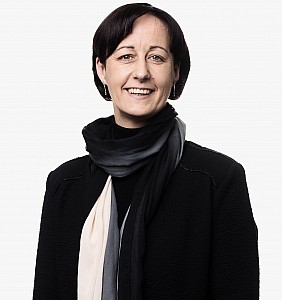Understanding Grace Periods in Patent Law: What You Need to Know as a New Inventor
As you become familiar with the patent world as an inventor, you may encounter the term 'grace period’. This concept can be a lifesaver if you’ve already disclosed your invention publicly but still want to protect it with a patent. However, grace periods can also be a source of confusion and misunderstanding, especially if you’re planning to file patents internationally. In this article, we’ll break down what grace periods are and some lesser-known aspects that can impact your strategy
What is a Grace Period?
In patent law, the concept of novelty is fundamental. For an invention to be patentable, it must be new - meaning it may have not been publicly disclosed before the patent application is filed. How strictly novelty is interpreted can vary across jurisdictions, often in the form of grace periods. A grace period in patent law is a specific window of time before you file a patent application, during which certain public disclosures of your invention (such as publications, presentations, or sales) won’t automatically disqualify you from obtaining a patent. It can be used as a buffer that allows you to test your idea in the public domain without immediately losing your right to patent it—or as a way to secure interest from investors or partners before fully committing to the patent process.
Lesser-Known Aspects of Grace Periods
Now that you have a basic understanding of how grace periods work, let’s dive into some aspects that often catch people off guard:
1. Grace Periods across different jurisdictions
One of the biggest misconceptions is assuming that grace periods apply globally. Some regions, such as Europe, have strict novelty requirements with few exceptions. Absolute novelty is the rule in Europe. In Europe, the European Patent Office (EPO) does not allow a general grace period for public disclosures, meaning any disclosure could harm your chances of obtaining a patent, even your own disclosure. However, there are some exceptions, such as disclosures made at officially recognized international exhibitions or under evident abuse, where the invention was disclosed without the inventor's consent.
Some national offices in Europe on the other hand allow a grace period. In Germany for example, a grace period of 6 months for utility models applies for own publications and prior usage. Utility models are a form of intellectual property similar to patents but offer faster protection, often within a few months, and have a shorter duration (usually 10 years compared to the 20 years for patents).
The US has probably the most liberal grace period, up until 12 months for disclosures made by the inventor or obtained by the inventor. This liberal grace period sometimes causes issues for US applicants. If you make a public disclosure thinking you’re protected by the 12-month grace period, you might unintentionally lose your rights in regions where no such grace period exists, such as Europe.
The table below provides an overview of the grace period rules for patent filings in five key jurisdictions.
2. Third-Party Disclosures Can Still Hurt You
Many inventors focus on their own public disclosures but forget that disclosures from third parties can still count as prior art during the grace period. For example, if someone else publishes a similar invention after your disclosure but before you file, that can complicate your patentability. Filing early is always better, even if you plan to use the grace period. You can’t control third-party disclosures, so the sooner you file, the better protected you are.
3. Not All Disclosures Are Protected
The grace period doesn’t necessarily cover every type of disclosure. In some countries, only specific types of public disclosures (like presentations at scientific conferences or recognized exhibitions) are protected. This means that simply posting your invention online or selling a prototype may not always be shielded by the grace period. Keep detailed records of how, where, and when you disclosed your invention. Some jurisdictions require documentation to prove that the disclosure qualifies for grace period protection.
4. Multiple Disclosures Can Get Tricky
If you make several public disclosures within the grace period, things can get complicated. A disclosure made early on might be protected, but a later disclosure could introduce new details not covered by the earlier disclosure. These new details may not be protected by the grace period. If you plan to make multiple disclosures, consider filing your patent application as early as possible to cover all aspects of your invention. Relying too heavily on the grace period can put you at risk of missing crucial details that later disclosures introduce.
5. The Concept Called "Self-Collision"
Under U.S. law, you can actually use your own public disclosure to prevent someone else from beating you to a patent. If you disclose your invention first and a competitor files before you, your earlier public disclosure can remove their filing as prior art against your application. Try and use the U.S. grace period strategically. If you need to test the market or seek investors, disclosing publicly first can allow you to still secure a patent even if others try to file similar inventions afterward.
6. Grace Periods May Not Apply to Design Patents
If you’re filing for a design patent (which covers the look or aesthetic of an object, not its function), be aware that many countries do not allow grace periods for design disclosures. A public disclosure could immediately destroy the novelty of your design and prevent you from getting a design patent. If you’re seeking design protection, always file before any public disclosure, even if your country has a grace period for utility patents.
Conclusion
Grace periods are a valuable tool for inventors, providing a safety net in case you’ve already disclosed your invention. However, they come with many nuances and aren’t a one-size-fits-all solution. Best practice therefore is to always file before you publish. This principle is the safest, especially when seeking global coverage.
By filing early, documenting your disclosures, and being strategic about when and where you disclose your invention, you can navigate the patent process with greater confidence. When in doubt, consult a patent attorney who can provide strategic advice, especially if you're seeking global protection.
Avez-vous une question?
Nous serons heureux de vous aider.
Prenez librement un rendez-vous avec un de nos experts.
Rassurez-vous, vous n'êtes pas seul.
Naviguez dans la FAQ. Avez-vous encore des doutes,
n'hésitez pas à nous contacter.




